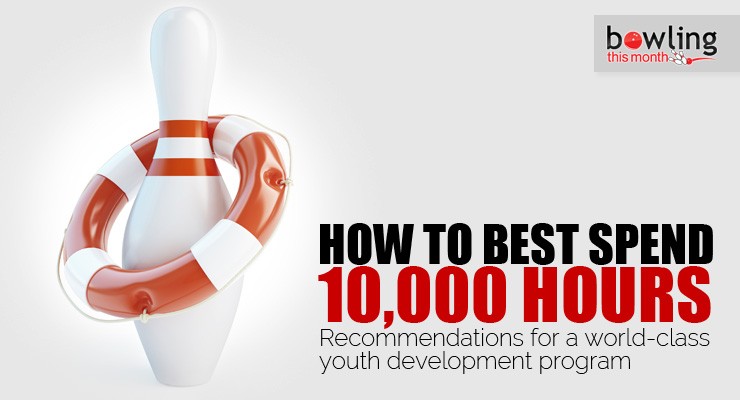Article Contents
- 1. Synaptic pruning
- 2. Highest performance levels begin young
- 3. Myelination starts at five and continues to mid-to-late 20s
- 4. How coaches provide feedback is important
- 5. Recommendations on the research realities
- 6. References
Note: This article is only available to Bowling This Month subscribers.
Many readers will be familiar with the ten year or 10,000 hour of training rule. Specifically, this informs us about how many hours of purposeful training are required to reach an elite level of performance. This rule is a well-documented research-based fact about the minimum practice time it takes for an individual to reach the highest level in an activity. This 10,000 hour rule was first articulated when Simon and Chase (1973) studied the knowledge of chess masters and estimated that cumulatively these experts had seen 10,000 to 50,000 hours of moves over their career.
Yet, it is not only the number of years or number of hours an individual invests that leads to becoming a world-class performer. Starting a sport at 25 years old and practicing for ten years will not make you a world champion.
Rather, and more importantly, it is the age at which an individual begins the sport and how they practice that will determine if they can possibly reach the highest echelon in their sport. Due to how the brain evolves and changes in both grey and white matter over childhood, to maximize their chances, an individual must start before the age of ten and engage in deliberate practice activities.
“For a range of intellectual and athletic abilities, if an individual wants to reach world-class level, he or she must start young. You built the brain you have today by interacting with the environment while you were growing up and your neural connections were still myelinating. You can adapt those abilities in many ways, but neither you nor I will become a world-class pianist, chess player, or tennis pro unless we began our training when we were children.”
— Dr. R. Douglas Fields
A person’s nervous system is structured similarly to the power lines which bring electricity to your house. Gray matter, or the hard wiring, transmits electrical signals encrypting our thoughts and actions. White matter, the fatty myelin, is similar to electrical wire insulation. It’s wrapped around axons and works to promote conservation of the electrical signals sent across the wiring. This maximizes ...
Already a premium member? Click here to log in.


